Who wants to go swimming?
Robert McCarthy |
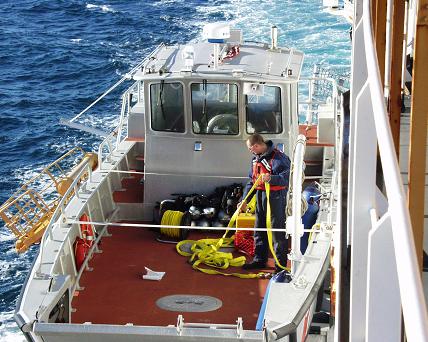 |
The ocean water temperature is 2.75oC, which is about 37oF. The day is fairly calm, sunny, and a balmy 43oF, considering we’re positioned at 78o 23’ latitude. Perfect swimming weather? Hardly, but the coast guard sent 6 SCUBA divers out on a small boat today to dive for clams. CLAMS? Yes, clams, and not for dinner tonight either. Dr. Robie MacDonald and Mary O’Brien, both with the Institute of Ocean Sciences, are also on this small boat to help locate the clams for the divers. Their research is to retrieve some clams at different water depths, and analyze their shells. That story can wait a few days, but today I want to talk about SCUBA diving. |
| SCUBA stands for Self Contained Underwater Breathing Apparatus, and not just anybody can harness a tank to their back and jump in. You must take an extensive training class which includes testing, to even qualify to take an “open-water” test. Most SCUBA diving classes are held partly in a swimming pool and partly in a classroom. But to become certified, you must leave the pool and pass a series of performance tests during either a lake or an ocean dive. I became certified when I was a high school student, and I remember having to study for the classroom tests. Why do you need to study? Just stick the regulator in your mouth and breathe normally, right? What could go wrong? PLENTY! |
| Pressure is a big concern for SCUBA divers. We already discussed that for every 10 meters of water you descent, the pressure is increased by another atmosphere. These divers will dive to a maximum depth of 30 meters today, so their bodies will feel the effects of 4 atmospheres of pressure. The regulator is the key to SCUBA diving. So what is a regulator and how does it work? |
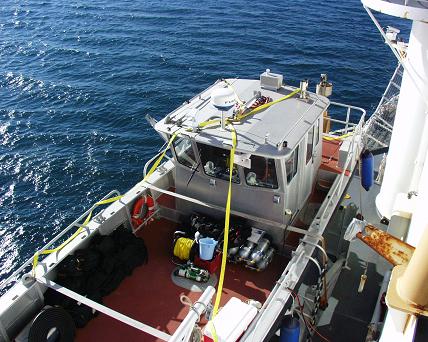 |
| The tank that you wear on your back contains air at very high pressures. A filled tank usually holds about 3000 psi (pounds per square inch) gauge pressure, which is a pressure of approximately 204 atmospheres. Each tank holds the equivalent of about 80 cubic feet of air. Think about a large box 4.25 feet on each side. That’s how much air is contained within a filled SCUBA tank. Another way of illustrating this is if you took that box filled with air down to a depth of 2040 meters. Just like the Styrofoam cups that compressed, that box would occupy the same volume as a SCUBA tank. |
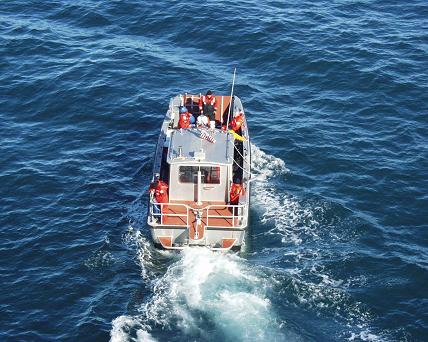 |
With all that pressure, you could not breathe directly from this tank. Plus, when you are down 30 meters, your body is feeling the effects of 4 atmospheres, so the pressure of the air going into you mouth must also be at 4 atmospheres. Your lungs couldn’t expand enough to breathe in air at only 1 atmosphere. This is interesting, because we are probably familiar with a snorkel. The length of a snorkel is only about 18 inches long. So why not just make longer and longer snorkels? If you tried to breathe through a garden hose while on the bottom of a swimming pool, you would find that you couldn’t. The pressure pushing in on your chest and lung muscles is too great to allow you to take a breath. So the deep-sea diving suits with the diving helmet had to be supplied with compressed air from the surface. |
| So how can you take very high-pressure air from the tank, sense the ambient water pressure at the depth you are diving, and supply the correct pressure air to your lungs? With the use of a regulator. One end of the regulator goes in your mouth, and the other end is attached to the air tank by a hose. When you breathe in through the mouthpiece, you create a partial vacuum in the regulator. The outside water pressure is now greater than the inside pressure of the regulator, so the water pressure pushes in on a watertight diaphragm. This rubber diaphragm then pushes on a release mechanism, thereby opening up a passageway for the air from the tank. This air is at the same pressure as the ambient water pressure. Therefore, the deeper you dive, the more compressed air you are inhaling, so the quicker you run out of air. When you exhale, the increased pressure in the regulator pushes out on the rubber diaphragm, shutting off the flow of air from the tank. This pressure inside the regulator builds up enough to open the exhaust valve. And the process is repeated for the duration of the dive. Plus, if you need air at any time, all you need to do is manually push in on the diaphragm (called the purge valve), and air will flow out of the mouthpiece. |
| Divers must always watch their tank pressure (to gauge how much time is left on their dive), and watch their depth. If you breathe highly compressed air for too long, your body absorbs the air bubbles in your blood. If you come up to the surface too fast, the tiny air bubbles in your blood expand too fast. This is called the “bends”, and you must either dive back down or get to a decompression chamber to recreate the high atmospheric pressure of the dive. Then they gradually restore the pressure in the chamber to atmospheric pressure. Thus, divers are always calculating their dive depth and dive time at that depth, to determine if they need to decompress on the way up and for how long. So, enjoy your dive! I’ll update you on the clamming operation soon. |
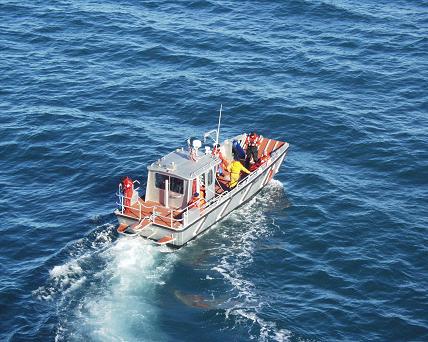 |
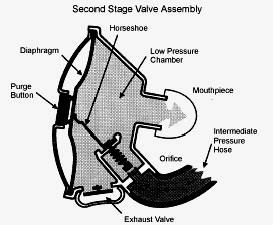 |
Check and double-check
Gerhard Behrens |
| When students finish something in my class, one of the first things I say to them is, “Check your work.” I expect them to make sure their name is on the paper, the first letter in a sentence is a capital, and a period or question mark ends every sentence. I point out sentences that need better spelling, I tell them if an answer is not complete, or I circle math problems that aren’t correct. Their job is to check those errors and correct them. |
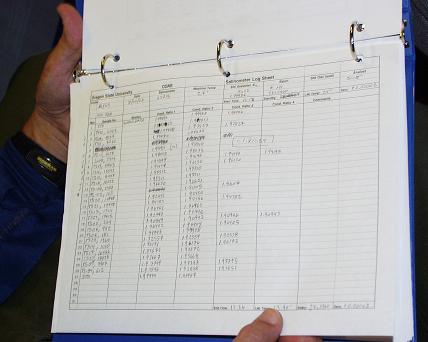
Two to three tests are done on each sample of water, then recorded by hand. |
| In the lab, the scientists and technicians are always checking that their work is done correctly. |
| When water samples are taken at different depths, a CTD monitor is attached to the sample cage (rosette) to measure saltiness, temperature, and the depth. Sometimes, our ship uses two CTD monitors to make sure the readings are correct. A computer program reads both monitors and tells the scientists the difference between one monitor and the other so they can always check for accuracy. |
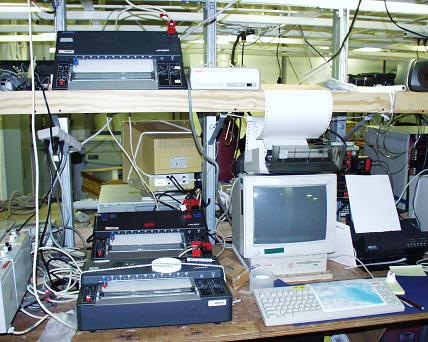
The nutrients tests are recorded in a computer and on a graph. |
The salinometer is another machine that measures how salty the water is. Every water sample is measured 2 times to make sure the amount of salt is correct. If those measurements are not almost exactly the same, then a third measurement is taken to check for accuracy. After every 30 samples, a bottle of special salt water is run through the machine to test that the machine is working correctly. |
| Measurements from the CTD are always checked with measurements from the salinometer to check for accuracy of the CTD. |
| When testing for nutrients in the water, the lab technician runs the water samples through a very complicated set of tubes and machines. The information is recorded and saved on a computer. The information is also displayed on a graph. With these two ways of recording, the techs and scientists can check for accuracy. |
| To test for freon, water samples go into a fancy machine and measurements show up on a computer. The lab tech also writes down the measurements, as he understands them. Back on shore in the lab, a second person will review the computer data and write down the measurements as they see them. The information from all three records is compared, to check for accuracy, before the data is considered correct. John, the technician, brought a bottle of special freon on the ship to test that his machine is working correctly. |
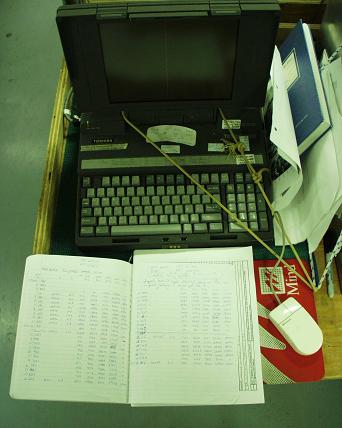
The freon measurements go into a computer’s memory and are recorded by hand in a notebook. |
| The list of checking goes on and on. The mooring team checks their equipment to make sure it works. A team of people works 24 hours a day to check that the equipment attached to the bottom of the ship is on and working. |
| It may not be an exciting part of the work of a scientist, but it is very important to make sure the collected information is correct. Checking and double-checking is part of the job. |
